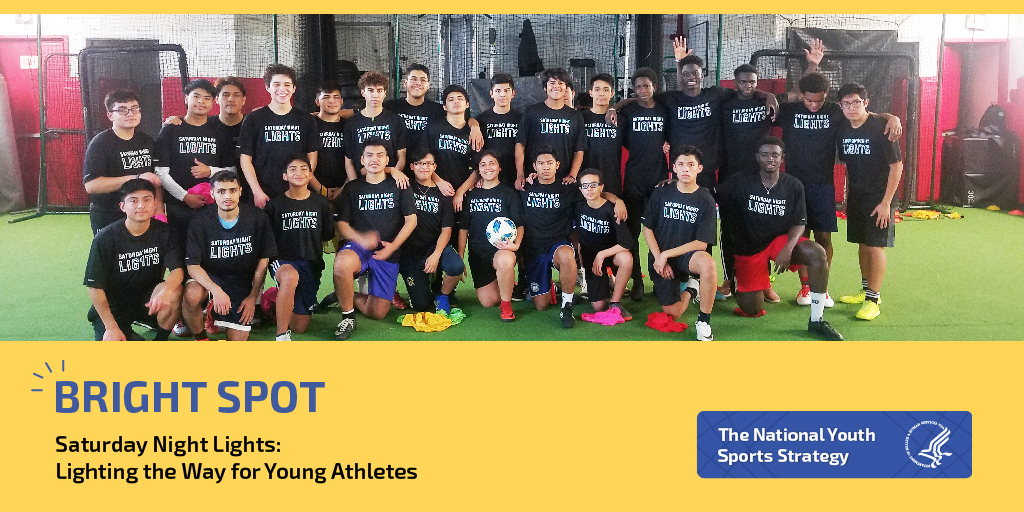From the National Youth Sports Strategy Bright Spots, a series that highlights how successful programs are boosting youth sports participation across the Nation.
Turn on the lights and get youth moving — that’s the bottom line at Saturday Night Lights (SNL), a signature youth development program created by Manhattan District Attorney Cyrus Vance.
What started as a single gym in West Harlem opening its doors to youth on Saturday nights has expanded to a city-wide sports program. Currently, 14 gyms in Manhattan provide safe spaces where youth can spend their Saturday nights. And by the fall of 2019, there will be an SNL gym in every borough, bringing the total to 20 gyms across New York City.
SNL offers a variety of programs — including soccer, basketball, rugby, and dance — in hopes that youth will engage in healthy community activities on Saturdays. “Young people are most at risk of being affected by crime on Saturday nights in under-resourced communities,” says Chauncey Parker, an Executive Assistant District Attorney and Senior Advisor to District Attorney Vance. “By opening gyms and providing exceptional sports programs, we’re keeping kids engaged and keeping them safe.”
Strategies: Innovate and Cooperate to Meet Youth Needs
Often, families in the neighborhoods that SNL supports do not have the means to enroll their youth in sports programs. But SNL has found an innovative — and efficient — way around that barrier. They are able to offer programming free of charge by reinvesting funds seized by the district attorney in financial crime prosecutions against major banks. “It’s a bit like Robin Hood,” says Parker. “We take money that people made from committing crimes and reinvest it into the community.”
And speaking of efficiency, SNL also leverages existing gyms’ connections with their communities, rather than trying to build new programs from scratch. Selecting engaged partners is crucial to program success, says Parker. “The first thing we look for in a partner is that they care about working with kids.”
Through these partnerships, SNL has also been able to connect youth with other services, like counseling and after-school homework help. Local organizations know their communities and their kids, explains Parker, so they are well positioned to help kids find the local resources they need. This helps SNL to keep costs low while promoting health and wellness from multiple angles.
Impact: Safe Spaces that Keep Youth Coming Back
Parker says the program’s influence is truly palpable. “Opening gyms to kids on Saturday nights creates a ripple effect in the community. Youth are not only off the streets, they’re learning valuable skills and engaging with their peers in a positive way.” And the District Attorney’s Office tries to keep the program model simple so other communities can get the same results. “Our goal is that every child in an under-resourced community has a fun, safe place to go on Saturday nights,” says Parker.
And getting youth through the door for the first time is just the start. SNL wants to see them coming back and forming relationships. And they do. Parker points to an SNL soccer program in East Harlem; it typically welcomes about 70 youth every Saturday night and maintains an impressive 90 percent retention rate.
Lesson Learned: Find Partners With Common Goals
When reflecting on the success of SNL programs, Parker says it comes down to finding the right partners. “Combining efforts with organizations who have similar goals for the community can really help.”
“Helping these kids is why we’re in public service in the first place,” says Parker. “The best part of the job is being in the gym — seeing the kids completely engaged and having a great time. On that night, we know we’ve made a difference.”




